Advertisement
Emojis, Lichtenstein and Legos — Hokusai's iconic 'Great Wave' lives on at the MFA
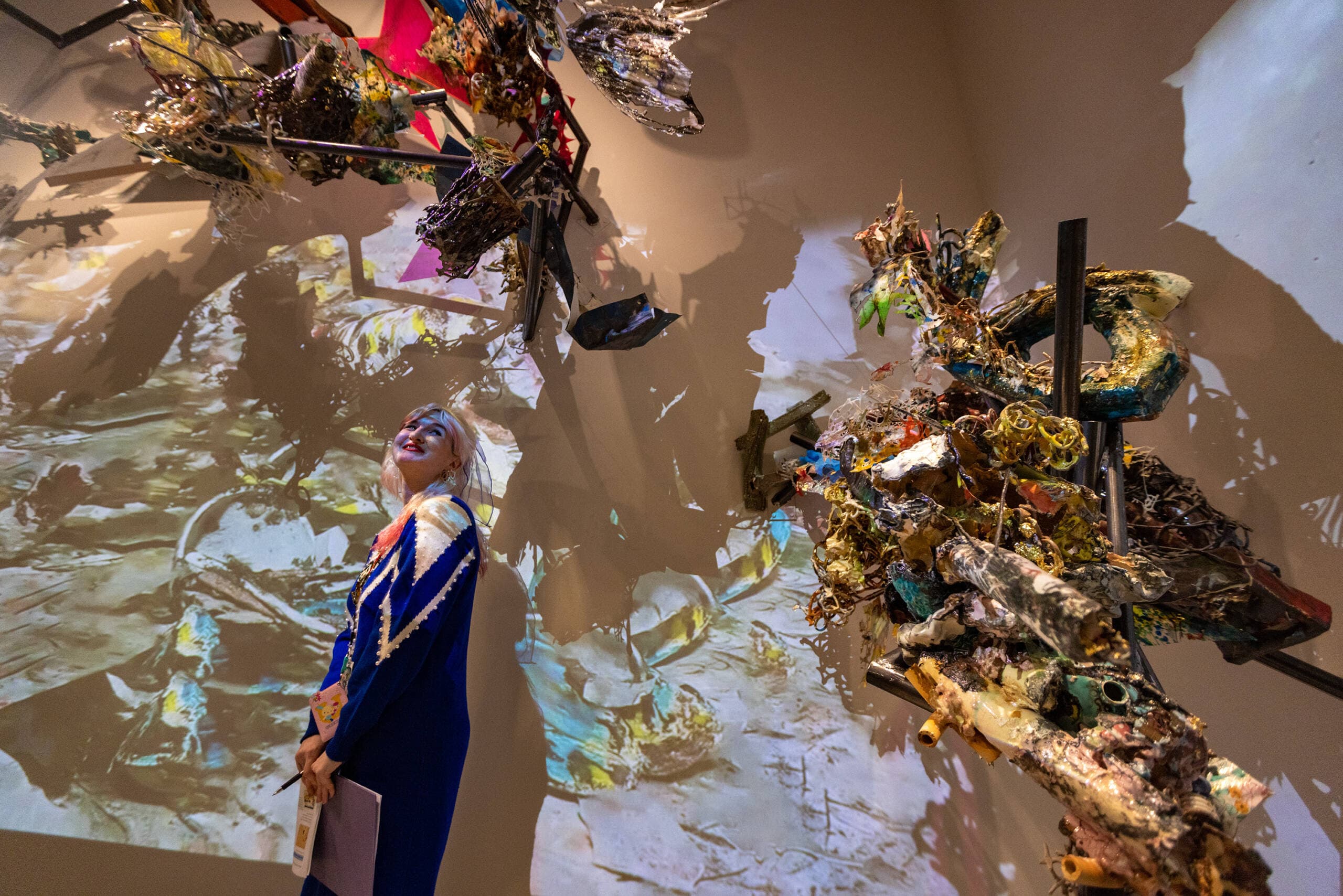
Ok, please pull out your cellphone. Now type the word “wave.” There's a good chance you're familiar with that tiny, curling blue image. But did you know it's transcended time and space to become such an icon?
"'The Wave' is everywhere — whether we know it or not — even in our phones as an emoji,” said Kendall DeBoer, curatorial assistant at the Museum of Fine Arts. “Or when I'm driving around Rhode Island, the license plates have a little silhouette that looks like 'The Wave.'"
Now the MFA is diving into how this 19th-century woodblock print and the master who made it have inspired generations of artists. More than 300 works spanning genres, cultures and eras fill room after room in the massive exhibition “Hokusai: Inspiration and Influence.” DeBoer walked past paintings, drawings and sculptures before stopping at the star of the show.
“It's this towering, navy cobalt wave with white foam bubbling up and curling in tendrils outward — and then two long boats,” she described. “And you get this grand sense of scale because Mount Fuji is really far in the background.”
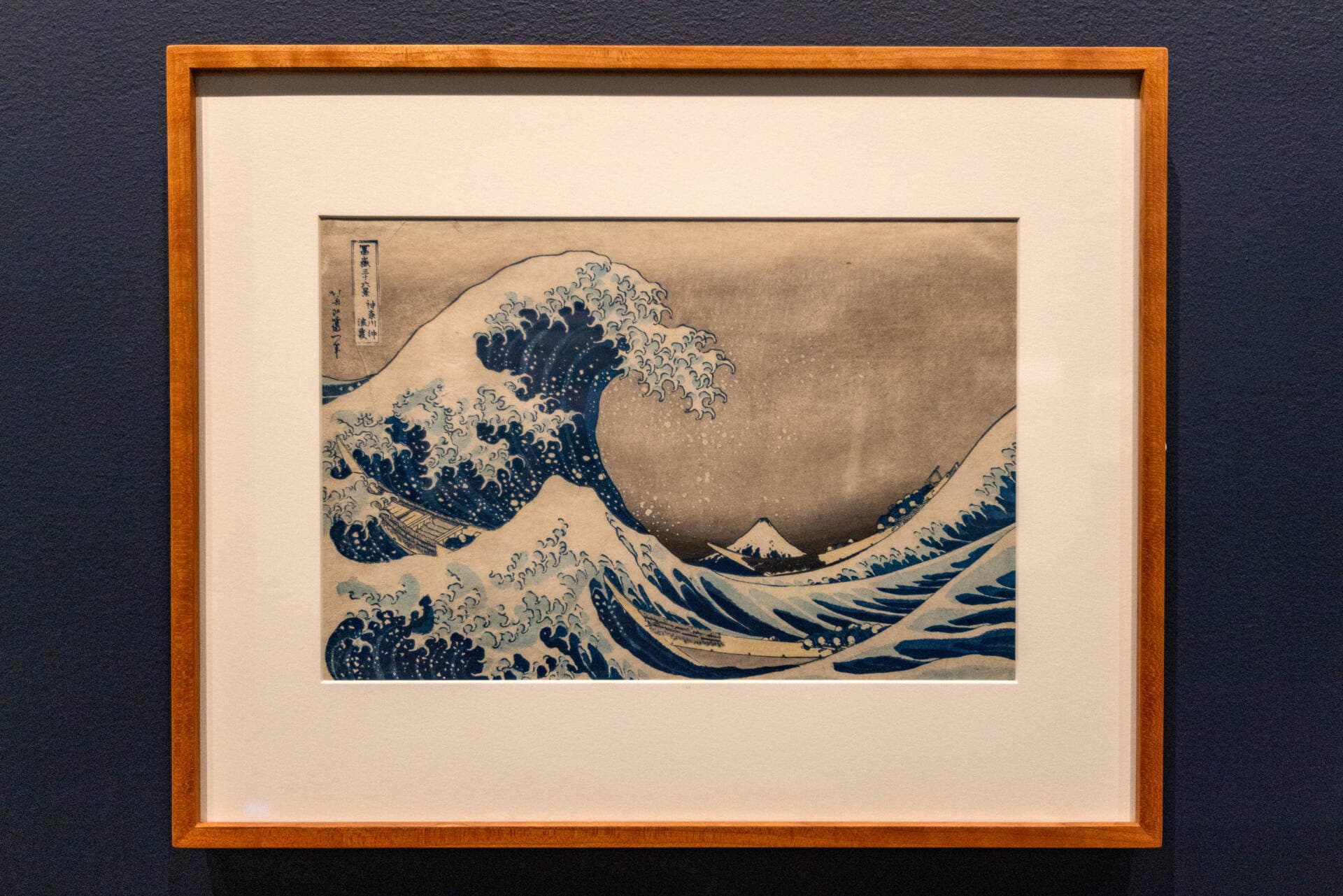
The work's official title is "Under the Wave off Kanagawa."And while the rogue crest in the foreground looms large, the framed print's actual size is surprising.
“It's like the 'Mona Lisa,' it's like 'The Scream.' It's an image that's larger than life in our heads,” DeBoer said. “So when we approach it, it's kind of interesting to see that it's not even two feet wide.”
This small-but-mighty image has been celebrated and imitated in myriad ways: on posters, billboards, T-shirts, coffee mugs, as tattoos and in memes. “It's almost like a kitsch icon, or a mass-produced pop icon,” DeBoer said. “And we learned before running this show that so many people can identify the visual of 'The Wave,' but not necessarily the artist's name, Hokusai.”
Katsushika Hokusai lived from 1760-1849, and as MFA curator of Japanese art Sarah Thompson explained, he was quite a character. She said as a teen, Hokusai ran away from his rich, adoptive uncle and became a prolific artist. He produced an estimated 30,000 paintings, illustrations and woodblock prints over his lifelong career. “He was a commercial artist,” Thompson said. “He and his publishers were trying to appeal to as many people as possible — and they succeeded beyond their wildest dreams.”
Advertisement
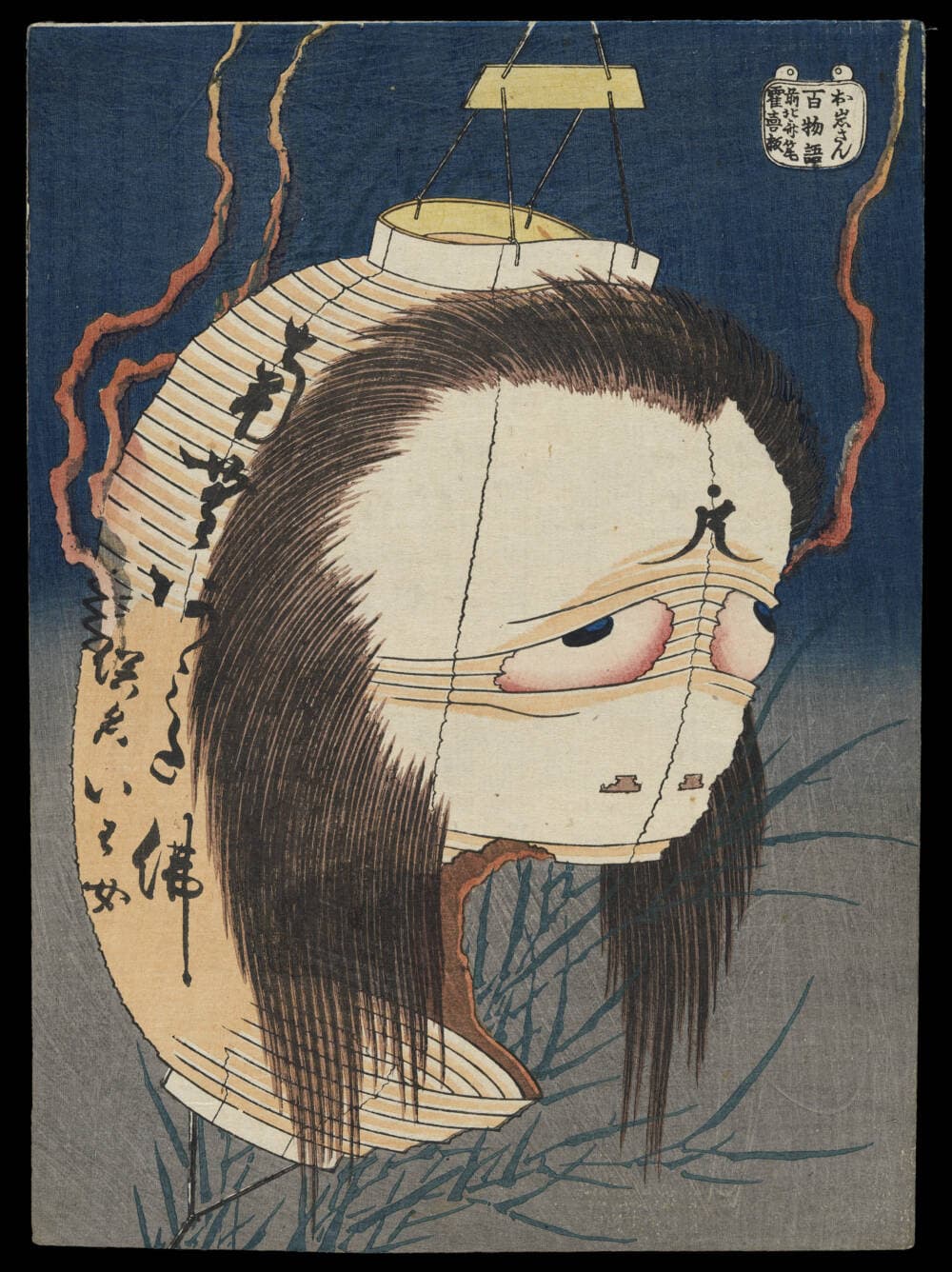
Hokusai's prints were affordable, and he became a household name in Japan. His versatility with subjects including warriors, animals, Mount Fuji and ghosts inspired students and rivals. Thompson selected examples of their work from the MFA's vast Japanese art collection to illustrate their admiration.
She believes the image's ambiguity – with its tiny humans on boats battling the raging sea – fuels its enduring appeal. “We don't know for sure whether or not those men in the boats are going to make it or not. I think they are,” Thompson added with a laugh, “but there's a certain amount of suspense in the picture.”
When Hokusai's prints reached Europe, Impressionists including Monet and Van Gogh were captivated by his colors and compositions. DeBoer researched and sourced a trove of works by 20th and 21st-century artists that reference “The Wave,” directly or indirectly. Throughout the gallery, loans and pieces from the MFA's collection are juxtaposed to unfurl the narrative of Hokusai's impact. Two of the first pieces visitors encounter are Annabeth Rosen's 2012 glazed earthenware “Wave” and Peter Soriano's print of the same name that he created in the wake of the 2004 tsunami in the Indian Ocean. “When it happened and caused so much death, the first thing he thought about was Hokusai's wave,” DeBoer said.
But a perfect storm of Hokusai's image comes together inside what DeBoer referred to as “The Wave room.” There you'll find John Cederquist's tall, graduated wood sculpture, “How to Wrap Five Waves” (1994-95) just steps away from a meticulously carved, large-scale 2017 woodcut print, also called"The Wave," by Christiane Baumgartner. Her gray-toned depiction is striated and looks like something you'd see on a computer screen or old-school TV. Turn 180 degrees and you can compare it with Hokusai's seminal image.
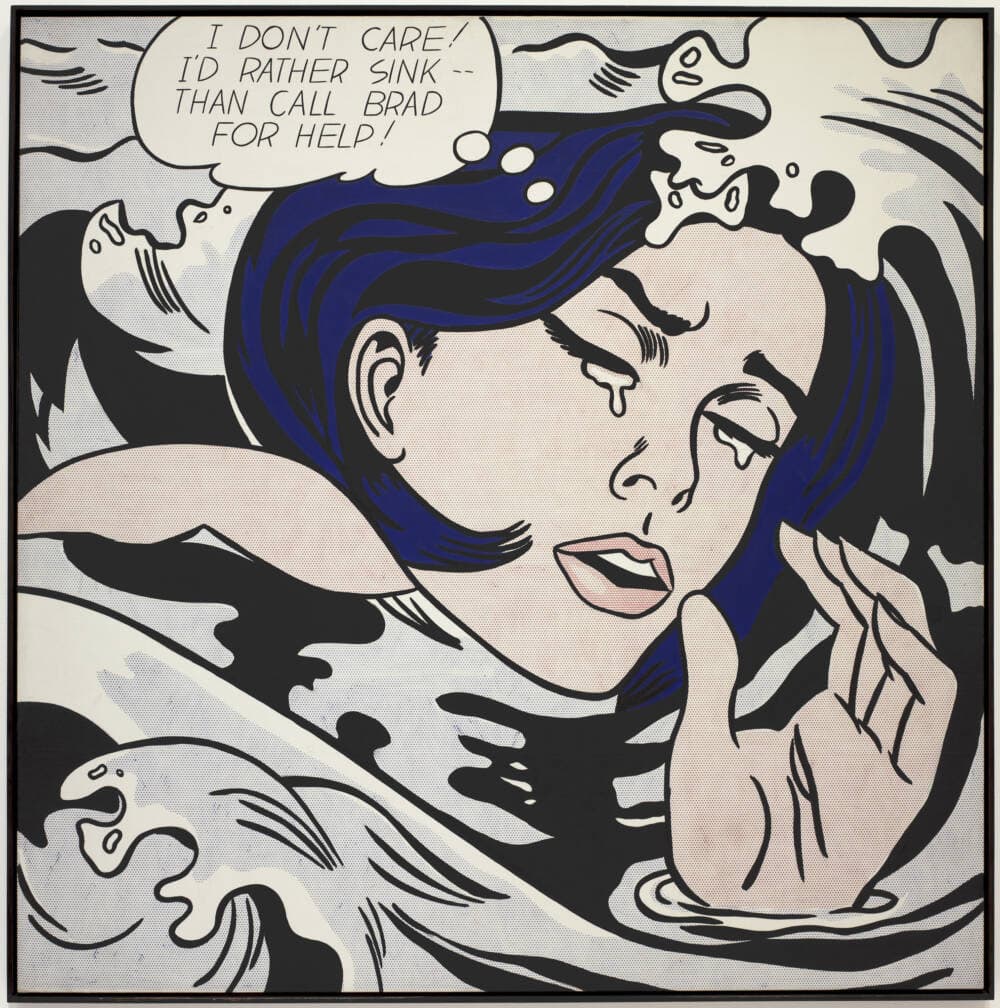
When asked to elaborate on why Hokusai has captured so many different artists' imaginations over time, DeBoer replied, “Well, Roy Lichtenstein said it was because he's a master of mixing the high and low. He was able to have a big sort of fine arts appeal, but also that popular appeal.”
Lichtenstein's iconic 1963 homage to Hokusai — the comic book-style painting “Drowning Girl” — is at the MFA too, on loan from The Museum of Modern Art. DeBoer was also excited to share how she tracked down a lesser-known drawing by another pop master — Andy Warhol. She found his 1980s rendition, called “The Great Wave (After Hokusai),” at The Andy Warhol Museum in Pittsburgh.
The watery image's ripple effect continues to entice a new generation of contemporary creatives, including certified LEGO professional Jumpei Mitsui. He flew to Boston from Japan to see his three-dimensional take on “The Wave,” which took 400 hours to assemble — and 50,000 Legos.
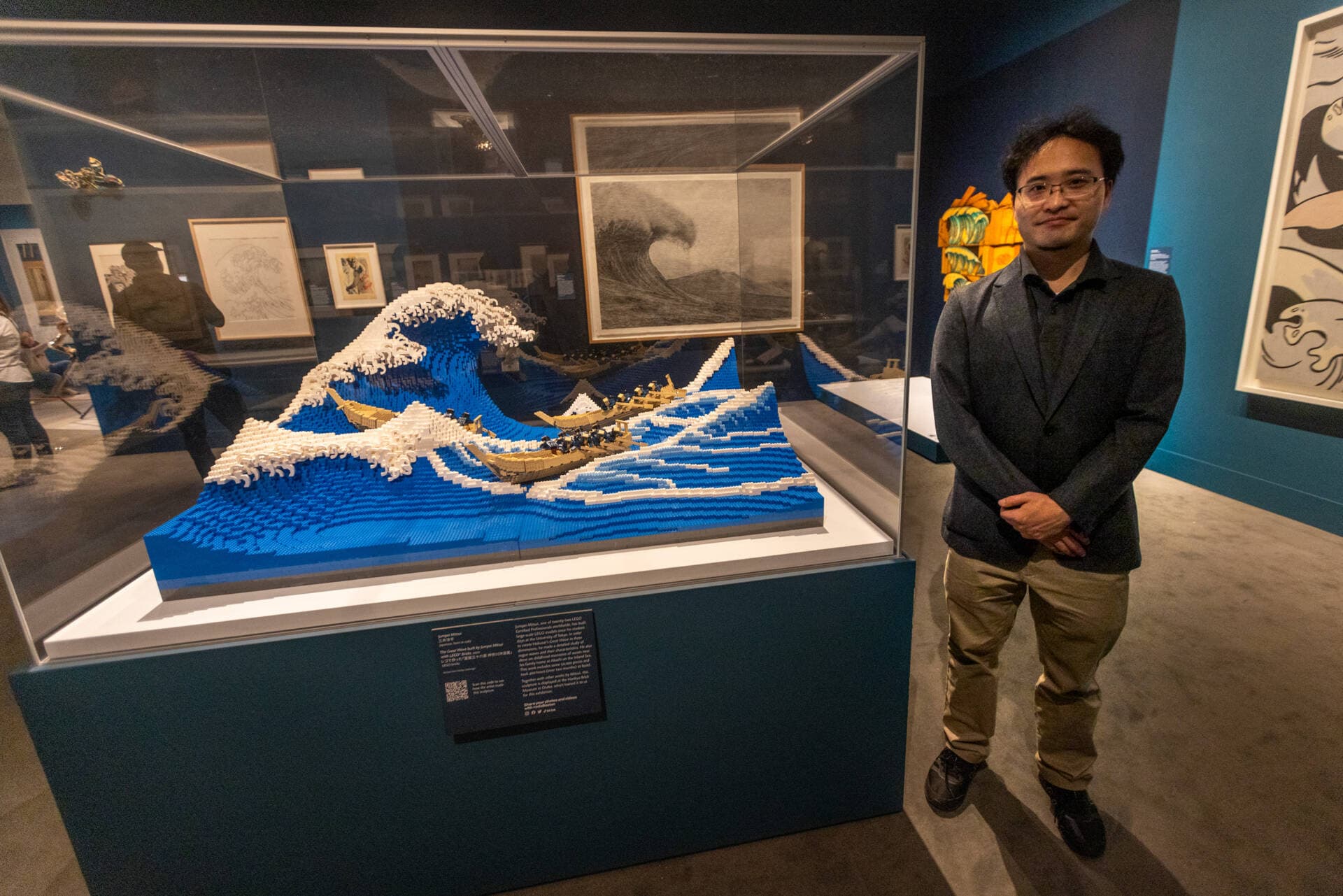
Mitsui's piece occupies a big glass case in the center of "The Wave" room. He hopes viewers will feel like the little Lego boatmen riding a churning, bright blue and white Lego sea. The image speaks to Mitsui, who grew up near the ocean in Japan. “I always observed the waves,” he said.
Mitsui explained that he didn't rely on computer design to conjure his wave. To recreate its drama, he studied Hokusai's print and practice. “I just respect him, and I'd like to expand his vision my way.”
The show's finale is “Blue Surge,” an undulating wall piece artist Taiko Chandler painstakingly made with hundreds of scalloped, blue and white prints on Tyvek.

“She takes days and days, hours and hours to fasten them on drywall with T-pins, a mallet and little fasteners,” DeBoer explained. “This work is beautiful, it's immense, it's grand and gorgeous – but also turbulent. It's swirling and whirling and suggestive of things that just leave you in awe.”
When Chandler conceived “Blue Surge” during the pandemic, she didn't consciously set out to honor Hokusai. For her, waves are metaphors that evoke emotion and movement, “in the sea, in society or just in my everyday life.”
As a youth, Chandler first encountered Hokusai through a painting he executed on the ceiling of a temple in her hometown, Nagano, Japan. “I was not exposed to seeing real art when I was a kid," she said. "Art wasn't available in the countryside. But every time I see his work, I really appreciate his amazing energy and imagination. He's just a master.”
"Hokusai: Inspiration and Influence" is on view at the Museum of Fine Arts, Boston through July 16.
This segment aired on April 4, 2023.
